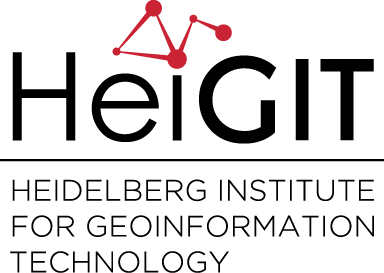Category: OSM
-
An assessment of a collaborative mapping approach for exploring land use patterns for several European metropolises
A new research paper entitled “An assessment of a collaborative mapping approach for exploring land use patterns for several European metropolises” has been published in International Journal of Applied Earth Observation and Geoinformation. Abstract: Until recently, land surveys and digital interpretation of remotely sensed imagery have been used to generate land use inventories. These techniques however,…
-
A practical algorithm for labelling areal features outside their boundaries
One of the subtasks of automated map labelling that has received little attention so far is the labelling of areas. Geographic areas often are represented by concave polygons which pose severe limitations on straightforward solutions due to their great variety of shape, a fact worsened by the lack of measures for quantifying feature-label relationships. In…
-
Summary of CAP4Access workshop in Heidelberg
On the 12th and 13th of August 2014, the Smart Simulation Group led by Dr. Mohamed Bakillah of the GIScience Research Group at Heidelberg University organized and hosted an internal workshop for the CAP4Access project partners. The aim of this workshop was to present and discuss the activities, sharing of tasks, ongoing progress and issues…
-
The Chilean newspaper El Mercurio reports about our VGI research
The Chilean newspaper El Mercurio has released an article about Heidelberg’s research on VGI and Neogeography in their Science and Technology section in the issue of 14 July 2014. El Mercurio, Santiago de Chile (No. 41.265), p. A11: Neogeografía: La geografía evoluciona al alero de las redes sociales.
-
Lettering Maps by considering Basemap Detail
If you followed our previous posts (#1, #2) concerning high quality cartographic label placement, then this post is worthy of notice. Topographic maps are arguably one of the most information-dense, yet intuitively usable, graphical artifacts produced by mankind. Cartography as science and practice has developed and collected a wealth of design principles and techniques to…
-
GIScience Heidelberg @ Santiago de Chile
The Heidelberg Center for Latin America (HCLA) in Santiago de Chile offers a Master of Science in Governance of Risk and Resources. This cooperative venture between the Geography institutes of Heidelberg University, the Universidad Catolica de Chile and the Universidad de Chile focuses on the (political and economic) controllability of problem-driven interaction between humans and…
-
Vacant position in GIScience Group: Research Associate in Social Science / Humanities
Within the research project “NEOHAZ – NEOgeography of a Digital Earth: Geoinformation Science as Methodological Bridge in Interdisciplinary Natural HAZard Analysis” we offer new position as “Research Associate in Social Science / Humanities“. Further information can be found here: – Job posting: Research Associate in Social Science / Humanities
-
Improving the Quality of Cartographic Labeling
The lettering process, including assigning names to point features, is an essential part of map production. While there have been numerous and varied research efforts to automate point-feature label placement (PFLP), none of them seems to have taken into account the many well-established cartographic precepts for point-feature annotation used by human cartographers. As a result,…
-
New Academy Project on Interdisciplinary Neogeography in Natural Hazard Analysis in Chile
The research project NEOHAZ – NEOgeography of a Digital Earth: Geoinformation Science as Methodological Bridge in Interdisciplinary Natural HAZard Analysis is funded by the WIN-Kolleg of the Heidelberg Academy of Sciences and Humanities (HAW) and runs from 2014 till 2017. Project Description: The understanding of complex human-environment interactions via measuring and observing can only be…
-
Exploiting Big VGI to Improve Routing and Navigation Services
Due to development of communication technologies, the amount of data, which each organization has to deal with, has been rapidly growing. The huge volumes of data appear as an opportunity to improve the performance and reliability of various applications, as such routing and navigation services can be named. However, the analysis of large datasets, commonly…
-
Fusion of human and remote sensor data in urban environments
OpenStreetMap (OSM) currently represents the most popular project of Volunteered Geographic Information (VGI): geodata are collected by common people and made available for public use. Airborne Laser Scanning (ALS) enables the acquisition of high-resolution digital elevation models that are used for many applications. Our new study combines the advantages of both ALS and OSM, offering…


